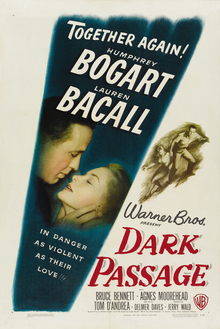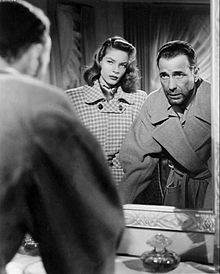
Humphrey DeForest Bogart, colloquially nicknamed Bogie, was an American actor. His performances in classic Hollywood cinema films made him an American cultural icon. In 1999, the American Film Institute selected Bogart as the greatest male star of classic American cinema.
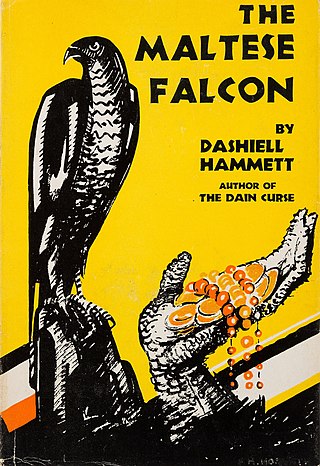
The Maltese Falcon is a 1930 detective novel by American writer Dashiell Hammett, originally serialized in the magazine Black Mask beginning with the September 1929 issue. The story is told entirely in external third-person narrative; there is no description whatsoever of any character's thoughts or feelings, only what they say and do, and how they look. The novel has been adapted several times for the cinema.

Sudden Fear is a 1952 American film noir thriller film directed by David Miller, and starring Joan Crawford and Jack Palance in a tale about a successful woman who marries a murderous man. The screenplay by Lenore J. Coffee and Robert Smith was based upon the novel of the same name by Edna Sherry.

Betty Joan Perske, professionally known as Lauren Bacall, was an American actress. She was named the 20th-greatest female star of classic Hollywood cinema by the American Film Institute and received an Academy Honorary Award in 2009 in recognition of her contribution to the Golden Age of motion pictures. She was known for her alluring, sultry presence and her distinctive, husky voice. Bacall was one of the last surviving major stars from the Golden Age of Hollywood cinema.
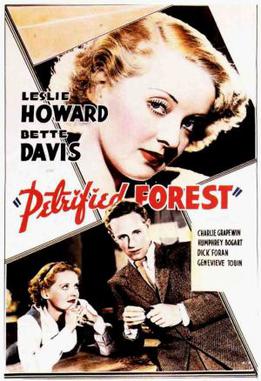
The Petrified Forest is a 1936 American crime drama film directed by Archie Mayo and based on Robert E. Sherwood's 1934 drama of the same name. The motion picture stars Leslie Howard, Bette Davis and Humphrey Bogart. The screenplay was written by Delmer Daves and Charles Kenyon, and adaptations were later performed on radio and television. The film is set in Petrified Forest National Park in Arizona.

In a Lonely Place is a 1950 American film noir directed by Nicholas Ray and starring Humphrey Bogart and Gloria Grahame, produced for Bogart's Santana Productions. The script was written by Andrew P. Solt from Edmund H. North's adaptation of Dorothy B. Hughes' 1947 novel of the same name.

Key Largo is a 1948 American film noir crime drama directed by John Huston and starring Humphrey Bogart, Edward G. Robinson and Lauren Bacall. The supporting cast features Lionel Barrymore and Claire Trevor. The film was adapted by Richard Brooks and Huston from Maxwell Anderson's 1939 play of the same name. Key Largo was the fourth and final film pairing of actors Bogart and Bacall, after To Have and Have Not (1944), The Big Sleep (1946), and Dark Passage (1947). Claire Trevor won the 1948 Best Supporting Actress Academy Award for her portrayal of alcoholic former nightclub singer Gaye Dawn.

The Big Sleep is a 1946 American film noir directed by Howard Hawks. William Faulkner, Leigh Brackett and Jules Furthman co-wrote the screenplay, which adapts Raymond Chandler's 1939 novel. The film stars Humphrey Bogart as private detective Philip Marlowe and Lauren Bacall as Vivian Rutledge in a story that begins with blackmail and leads to multiple murders.
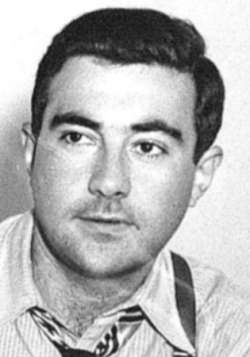
David Loeb Goodis was an American writer of crime fiction noted for his output of short stories and novels in the noir fiction genre. Born in Philadelphia, Goodis alternately resided there and in New York City and Hollywood during his professional years. According to critic Dennis Drabelle, "Despite his [university] education, a combination of ethnicity (Jewish) and temperament allowed him to empathize with outsiders: the working poor, the unjustly accused, fugitives, criminals."

Dark Passage (1946) is a crime novel by David Goodis. It was the basis for the 1947 film noir of the same name. The film implements extensive use of the first-person camera technique.

Impact is a 1949 American film noir drama film starring Brian Donlevy and Ella Raines. Directed by Arthur Lubin, it was shot entirely in Northern California, including scenes in Sausalito at Larkspur in Marin County, on Nob Hill in San Francisco, and throughout the Bay area. The screenplay was based on a story by film noir writer Jay Dratler. Charles Coburn, Helen Walker, Anna May Wong, Philip Ahn, and William Wright appear in support.
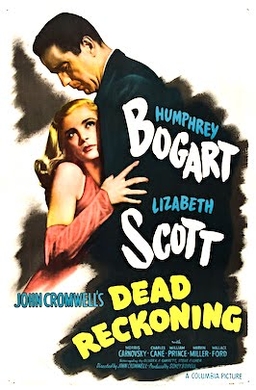
Dead Reckoning is a 1947 American film noir directed by John Cromwell and starring Humphrey Bogart, Lizabeth Scott, Morris Carnovsky, and William Prince. It was written by Steve Fisher and Oliver H.P. Garrett, based on a story by Gerald Drayson Adams and Sidney Biddell, adapted by Allen Rivkin. Its plot follows a war hero, Warren Murdock (Bogart) who begins investigating the death of his friend and fellow soldier, Johnny Drake (Prince). The investigation leads Murdock to his friend's mistress, a mysterious woman whose husband Drake was accused of murdering.
To Have and Have Not is a 1944 American romantic war adventure film directed by Howard Hawks, loosely based on Ernest Hemingway's 1937 novel of the same name. It stars Humphrey Bogart, Walter Brennan and Lauren Bacall; it also features Dolores Moran, Hoagy Carmichael, Sheldon Leonard, Dan Seymour, and Marcel Dalio. The plot, centered on the romance between a freelancing fisherman in Martinique and a beautiful American drifter, is complicated by the growing French resistance in Vichy France.

Conflict is a 1945 American black-and-white suspense film noir made by Warner Brothers. It was directed by Curtis Bernhardt, produced by William Jacobs from a screenplay by Arthur T. Horman and Dwight Taylor, based on the story The Pentacle by Alfred Neumann and Robert Siodmak. It starred Humphrey Bogart, Alexis Smith, and Sydney Greenstreet. The film is the only pairing of Bogart and Greenstreet of the five in which they acted together where Bogart rather than Greenstreet is the villain or corrupt character. There is also a cameo appearance of the Maltese Falcon statue.

The Maltese Falcon is a 1931 American pre-Code crime film based on the 1930 novel The Maltese Falcon by Dashiell Hammett and directed by Roy Del Ruth. The film stars Ricardo Cortez as private detective Sam Spade and Bebe Daniels as femme fatale Ruth Wonderly. The supporting cast features Dudley Digges, Thelma Todd, Walter Long, Una Merkel, and Dwight Frye. Maude Fulton and Brown Holmes wrote the screenplay; one contemporaneous report said that Lucien Hubbard was assisting them.
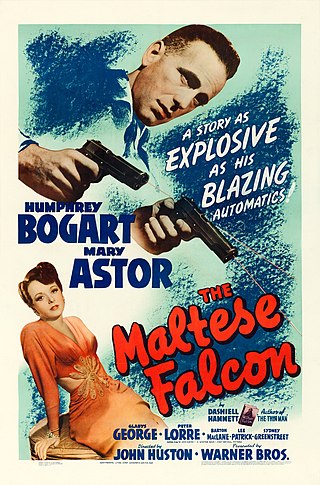
The Maltese Falcon is a 1941 American film noir in which a San Francisco private detective deals with three unscrupulous adventurers, all seeking a jewel-encrusted falcon statuette. Written and directed by John Huston in his directorial debut, the film was based on the 1930 novel The Maltese Falcon by Dashiell Hammett and is a remake of the 1931 film of the same name. It stars Humphrey Bogart as private investigator Sam Spade, Mary Astor as his femme fatale client, and as villains Peter Lorre and Sydney Greenstreet.
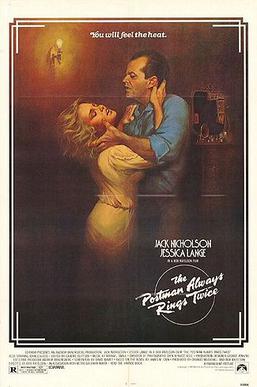
The Postman Always Rings Twice is a 1981 American neo-noir erotic thriller film directed by Bob Rafelson and written by David Mamet. Starring Jack Nicholson and Jessica Lange, it is the fourth adaptation of the 1934 novel by James M. Cain. The film was shot in Santa Barbara, California.
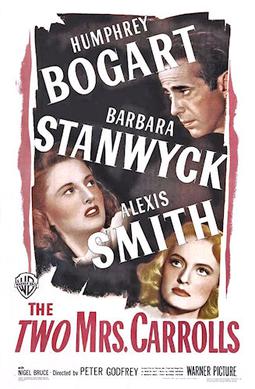
The Two Mrs. Carrolls is a 1947 American mystery film noir directed by Peter Godfrey and starring Humphrey Bogart, Barbara Stanwyck, and Alexis Smith. It was produced by Mark Hellinger from a screenplay by Thomas Job, based on the 1935 play by Martin Vale.
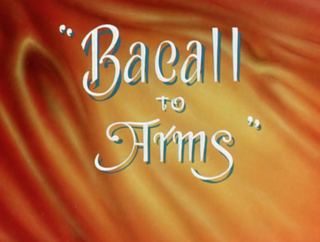
Bacall to Arms is a 1946 Warner Bros. Merrie Melodies series short planned by Bob Clampett and finished by Arthur Davis, in his second-to-last cartoon at Warner Bros. The short was released on August 3, 1946.

The Malloch Building is a private residential apartment building on Telegraph Hill in San Francisco designed in the Streamline Moderne style and built in 1937. The building, one of the best examples of its type in San Francisco, is also known as Malloch Apartments, Malloch Apartment Building, and simply by its address: 1360 Montgomery Street. Some have called it the "Ocean-Liner House", though other Moderne buildings have also been known by that nickname.
